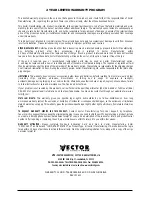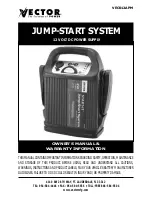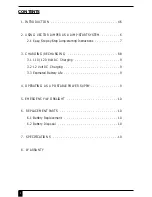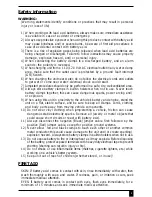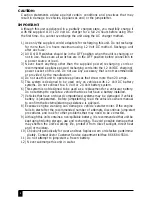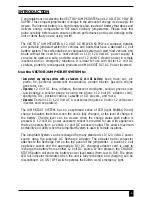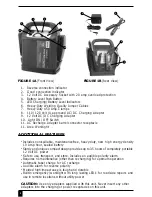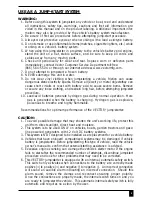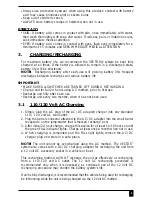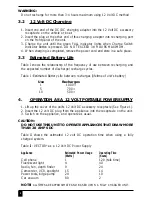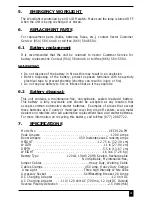
7
2.1
EASY, STEP-BY-STEP JUMP-STARTING INSTRUCTIONS
This jump-starter is equipped with an automatic ON/OFF that only allows jump-
start energy to flow when proper connections are made to battery and frame. The
automatic ON/OFF works in conjunction with an audible reverse polarity alarm
and a large red LED. If inadvertent reverse polarity occurs, the alarm will sound
and the red LED will light. Disconnect the black clamp (negative clamp) first, then
the red clamp. Reconnect properly and a green LED will light. Wait one minute
and then turn the key. To recap:
CONNECT – Red clamp first, then black clamp.
DISCONNECT – Black clamp first, then red clamp.
NOTE: Automatic On/Off only works when the vehicle battery has on at least 2.5 volts
1. Turn OFF vehicle ignition and all accessories (radio, A/C, lights, cell phone,
etc.). Place vehicle in park and set the emergency brake.
2. Remove booster clamps from clamp holster.
3. Procedure for jump-starting a NEGATIVE GROUNDED SYSTEM (NEGATIVE
BATTERY TERMINAL IS CONNECTED TO CHASSIS).
3a. Connect positive (+) red clamp to vehicle battery’s positive terminal.
3b. Connect negative (-) black clamp to chassis or a solid, non-moving, metal
vehicle component or body part. Never clamp directly to negative battery
terminal or moving part. If the audible alarm sounds, the polarity is not correct.
Reverse the connections.
4. Procedure for jump-starting POSITIVE GROUND SYSTEMS (NOTE: In the rare
event that the vehicle to be started has a Positive Grounded System (positive
battery terminal is connected to chassis) replace steps 3a and 3b above with
steps 4a and 4b, then proceed to steps 5 through 7 below.
4a.Connect negative (-) black clamp to vehicle battery’s negative terminal
4b. Connect positive (+) red clamp to vehicle chassis or a solid, non-moving,
metal vehicle component or body part. DO NOT CLAMP DIRECTLY TO POSITIVE
BATTERY TERMINAL OR MOVING PART
5. A five (5) second delay is built into this jump-starter unit after the clamp connections
are made. This delay is designed to reduce the possibility of sparking upon
connection. We recommend waiting one (1) minute after making the clamp
connections prior to attempting to start vehicle.
6. Start vehicle (do not turn key for longer than 3-5 seconds).
7. After vehicle starts, remove clamps (disconnect the frame or engine clamp first,
followed by the battery cable) and replace them in the built-in storage holsters.
Squeeze the handles and slide the clamp into position and release your grip.
CAUTION:
1. If engine fails to start, leave ignition key turned off and disconnect the negative
(-) clamp first, then the positive (+) clamp. Try again later – the engine may be
flooded.
2. Recharge jump-start system after each use.
WARNING:
•
Always disconnect the engine or frame jumper clamp first; followed by the battery
jumper clamp
•
There is a risk of explosive gases being released when batteries are charged or
discharged, failure to follow instructions may cause property damage, explosive
hazard, and/or personal injury.

